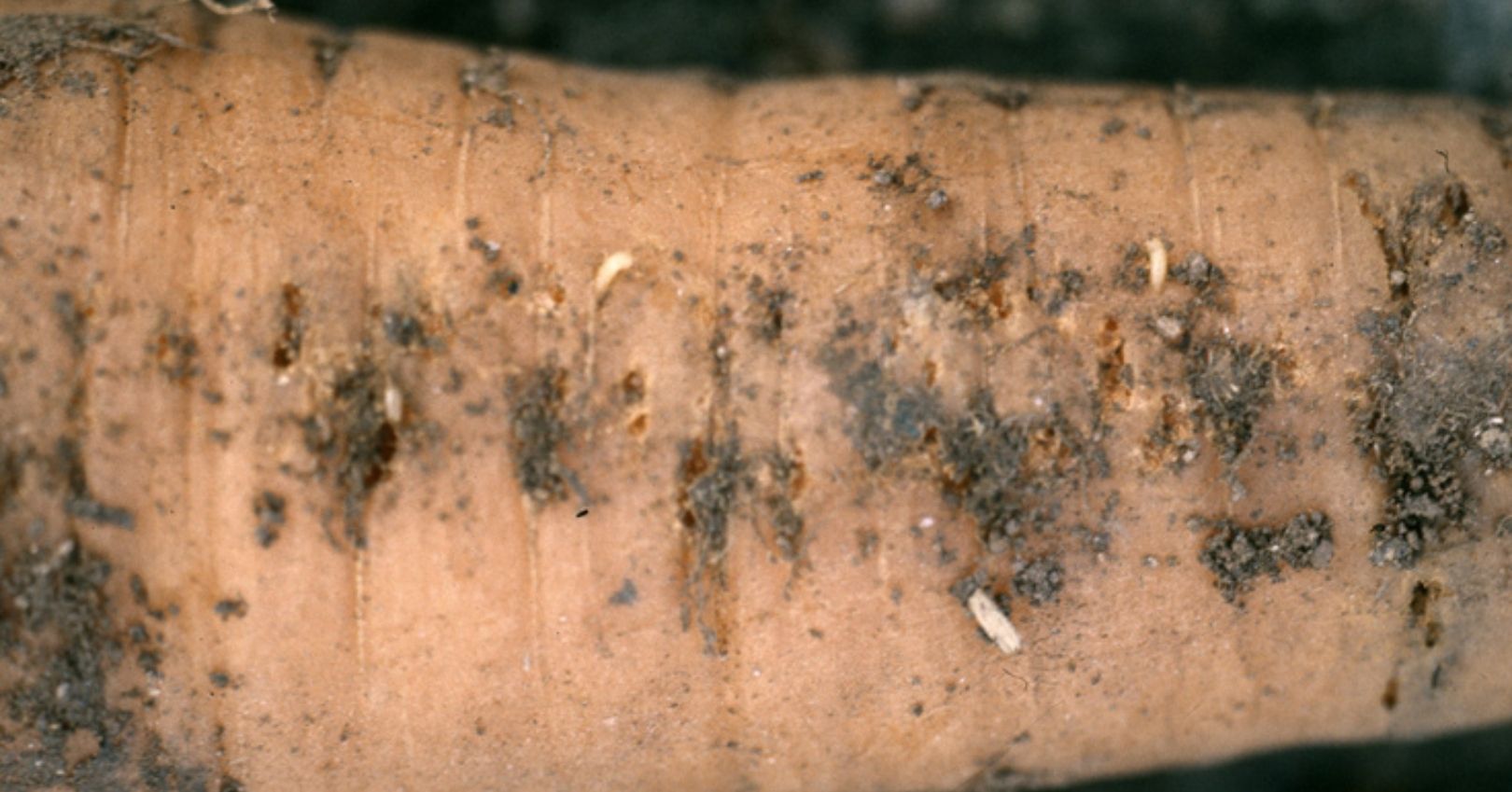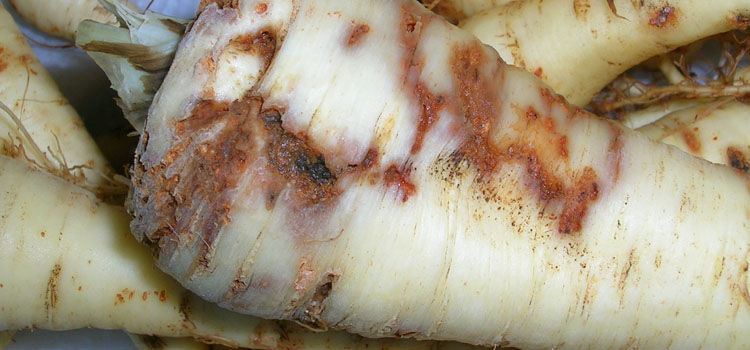Carrot Rust Fly



Description
Adult: 1/5 inch long, slender, black abdomen and thorax, orange-colored head, and yellow legs. Wings are a dark transparent color and ½ inch wide in full span. The abdominal tip for females is pointed, and rounded on males.
Egg: White, 0.6-0.9 mm long and 0.15 mm wide.
Nymph: Yellow-brown and 1/5 inch in length
Life History
Carrot rust flies overwinter as pupae in the soil near the host plant, or sometimes as larvae within carrot roots. Adults emerge during May and June in favorable cool, moist conditions. Females lay up to 40 eggs on the soil surface, near the base of plants in clusters of 1 to 3 eggs. When hatched, the larvae feed on the roots for a few weeks, and eventually pupate in the soil for approximately 25 days. The carrot rust fly has 1 to 3 generations per year in Utah, with the second generation emerging in August. Not all generations may be damaging, because the marketable hosts may not be present in the field at the time.
Damage
In Utah, carrot rust flies are sporadic but can cause significant damage to crops when present. The larva is the damaging stage, and feeds on umbelliferous species, mainly carrots, but also targets celery, celeriac, chervil, parsnips, and parsley. Newly hatched larvae enter through the root surface and mine the lower portion of the carrot roots (upper portion in parsnips) which causes scarring on older plants or kills younger plants. The tunnels created in carrots turn a red rusty color and may become colonized by fungi or bacteria. Above-ground symptoms include wilting and plant stunting
Management
To identify the carrot rust fly population and determine when adults are active in a field, place at least two yellow sticky traps near the soil level.
Cultural
- Timely harvest. Harvest all carrots in blocks (rather than selectively) as soon as they are ready. This will prevent larvae from spreading from plant to plant within the soil.
- Delay planting. Planting carrots after mid-June will avoid the peak egg-laying period.
- Avoid planting near other host plants and weeds. Carrot rust flies attack both umbelliferous crop and weed species such as wild carrot (Daucus carota) and water hemlock (Conium maculatum).
- Crop Rotation. Rotating to non-susceptible hosts every year will break the carrot rust fly life cycle and prevent the population from building.
- Remove crop residue. Remove all carrots and related host crops from the ground at the end of the growing season to prevent overwintering populations.
- Use floating row covers, where practical to prevent flies from landing near host plants and laying eggs.
Chemical
Granular insecticides are usually best when incorporated into the furrow at planting to prevent larval attack on the roots.
Biological
Natural enemies of carrot rust flies include the parasitoids Chorebus gracilis, Eutrias tritoma, and Aleochara sparsa which target the early larval and pupa stages of the carrot rust fly.

